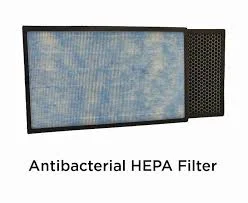In healthcare settings, preventing infections is of utmost importance to ensure the well-being of patients and healthcare professionals. One potential solution that has gained attention is the use of antibacterial filters. These filters are designed to remove harmful bacteria and microorganisms from the air, reducing the risk of airborne transmission of infections. In this blog post, we will explore the effectiveness of antibacterial filters in healthcare settings and their potential role in preventing infections.
Understanding Antibacterial Filters
Antibacterial filters are specialized filters that are designed to trap and eliminate bacteria and microorganisms from the air. They work by utilizing various mechanisms such as electrostatic attraction, mechanical filtration, and antimicrobial coatings. These filters are specifically engineered to target and remove harmful pathogens, ensuring cleaner and safer air quality.

The Importance of Air Quality in Healthcare Settings
Air quality plays a crucial role in healthcare settings as poor air quality can contribute to the spread of infections. In healthcare facilities, airborne bacteria can originate from various sources such as patients, healthcare workers, and contaminated surfaces. These bacteria can remain suspended in the air for extended periods, increasing the risk of transmission to vulnerable individuals. By implementing antibacterial filters, healthcare facilities can significantly improve air quality and reduce the concentration of harmful pathogens.
The Role of Antibacterial Filters in Infection Control
Antibacterial filters have shown promise in preventing the spread of airborne infections in healthcare settings. Studies have demonstrated that these filters can effectively remove a wide range of bacteria, including common pathogens such as Staphylococcus aureus and Escherichia coli. By reducing the concentration of these bacteria in the air, the risk of transmission to patients and healthcare workers can be significantly minimized.
Furthermore, antibacterial filters can also help in preventing the spread of antibiotic-resistant bacteria, which pose a significant threat to public health. These filters can effectively capture and eliminate bacteria that have developed resistance to antibiotics, reducing the chances of healthcare-associated infections.

Case Studies and Success Stories
Several healthcare facilities have successfully implemented antibacterial filters as part of their infection control measures. These facilities have reported positive outcomes and benefits after using antibacterial filters. For instance, a hospital in a study observed a significant reduction in airborne bacterial counts after installing antibacterial filters in their ventilation systems. This resulted in a decrease in healthcare-associated infections and improved patient outcomes.
Best Practices for Implementing Antibacterial Filters
When implementing antibacterial filters in healthcare settings, several factors should be considered. It is essential to select filters that are specifically designed for healthcare applications and have been tested for their effectiveness against relevant pathogens. Regular maintenance and replacement of filters are crucial to ensure optimal performance. Additionally, it is important to note that antibacterial filters should be used in conjunction with other infection control measures such as hand hygiene, surface disinfection, and proper ventilation.

Conclusion
Antibacterial filters have the potential to play a significant role in preventing infections in healthcare settings. By effectively removing harmful bacteria and microorganisms from the air, these filters can improve air quality and reduce the risk of airborne transmission. However, it is important to consider various factors such as filter selection, maintenance, and additional infection control measures to maximize the benefits of antibacterial filters. As research and technology continue to advance, healthcare facilities can stay proactive in implementing effective infection control strategies.
Functional Filters: The Solution to Contaminant Removal in Food Processing







